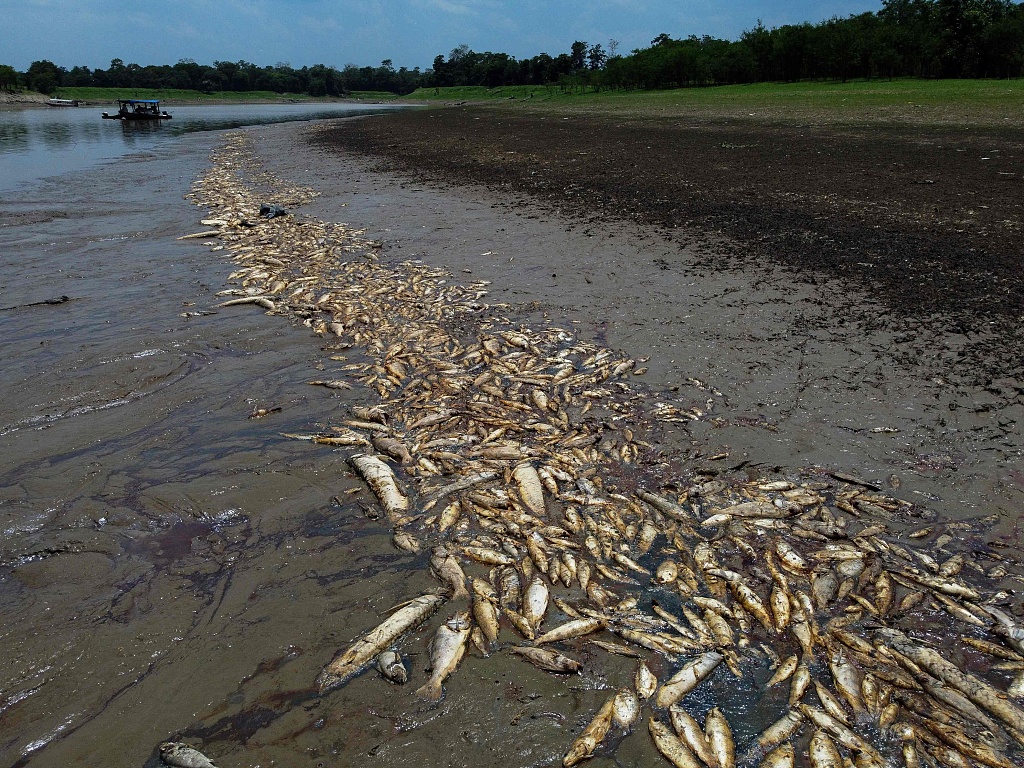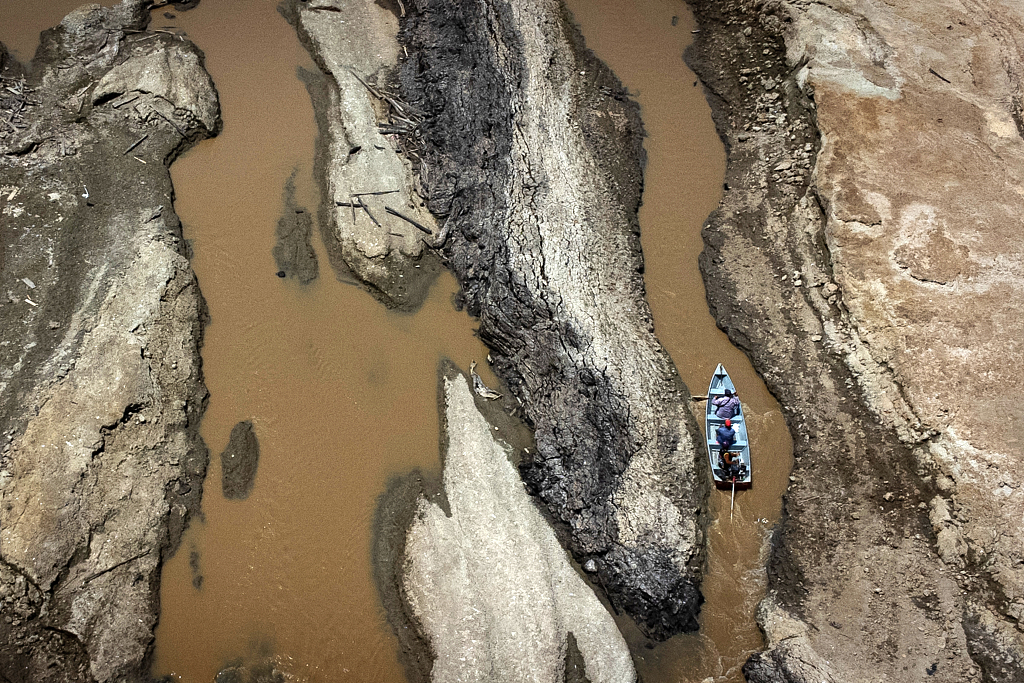A severe drought choking major rivers in the Amazon rainforest has disrupted ship traffic near the region's biggest city and pushed up costs for northern shipping routes, raising risks for corn exports in coming months.
The unusual heat and dryness, linked to the mass deaths of fish and river dolphins, has already limited local communities' access to food and drinking water, leading the federal government to set up a humanitarian task force. Officials are now warning the thinning rivers could disrupt grains exports in the region.

Dead fish due to low volume of water are seen at the Lago do Piranha Sustainable Development Reserve in Manacapuru, Amazonas State, northern Brazil, September 27, 2023. /CFP
Dead fish due to low volume of water are seen at the Lago do Piranha Sustainable Development Reserve in Manacapuru, Amazonas State, northern Brazil, September 27, 2023. /CFP
"There is concern about shipping part of the corn harvest, which will still take another two to three months," the Agriculture Ministry said in a written statement.
The worst effects of the drought have been focused west of Manaus, the capital of Amazonas state, the ministry said, adding that the lower Amazon and Tapajos River remain in good shape.
But navigation along the Amazon's upper tributaries, often tricky in the dry season, has become especially difficult.
Some of those rivers are key to the logistical breakthroughs whereby Brazil has consolidated northern export routes, boosting competitiveness of the South American grains powerhouse.

Aerial view as a small boat sails a small branch of the Amazon River that connects with the Negro River in Manaus, Brazil, October 4, 2023. /CFP
Aerial view as a small boat sails a small branch of the Amazon River that connects with the Negro River in Manaus, Brazil, October 4, 2023. /CFP
Low river levels have also affected docking of transoceanic ships around Manaus and pushed up pilotage costs, said Thiago Pera, a logistics research coordinator at the Group of Research and Extension in Agroindustrial Logistics (ESALQ-LOG). He said Brazil's bumper soy crop is already out the door, but conditions could prove tricky for shipping this year's second corn harvest.
The chief executive of barge operator Hidrovias do Brasil said there was no impact yet on its routes along the Tapajos, where barges typically run at two-thirds capacity in the dry season.
CEO Fabio Schettino said climactic conditions may postpone the rainy season, which often starts in November, by "weeks or a month," adding that he saw the unusual weather as part of annual variation rather than a "structural change."
Meteorologist Gilvan Sampaio, from Brazilian space agency INPE, said this year's drought in the Amazon could prove to be the worst on record. He said the dryness might last through 2024 if El Niño intensifies in the Pacific Ocean and there is no cooling of tropical waters in the North Atlantic.
The agriculture ministry said there was a risk of shipping costs rising in Brazil without a corresponding boost in global prices, which could squeeze local farmers and traders, adding that "so far we do not see this impact."
Source(s): Reuters